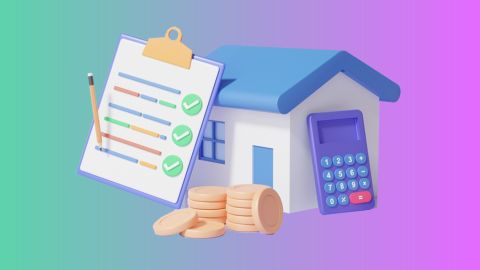In the dynamic world of property transactions, ensuring your property's legal status is crucial. Whether you are buying, selling, or applying for a loan against property by Bajaj Finance, confirming the encumbrance certificate status is an essential step. An encumbrance certificate provides a clear record of all financial and legal obligations associated with a property. This article offers a comprehensive guide on understanding the EC, its benefits, and the step-by-step process of encumbrance certificate status check online.
Understanding the encumbrance certificate
An encumbrance certificate (EC) is an official document issued by the registrar of assurances. It certifies that a property is free from any monetary or legal liabilities, such as mortgages, loans, or legal disputes. The EC provides a detailed history of all transactions related to the property over a specified period. It includes details of sales, mortgages, and any other encumbrances that affect the property. This document is indispensable for anyone looking to buy, sell, or leverage their property for financial purposes, ensuring the property’s title is clear and unencumbered.
Benefits of checking EC status online
Checking the encumbrance certificate status online offers multiple advantages, including:
- Convenience: Online status checks can be performed from anywhere, eliminating the need for physical visits to the registrar’s office.
- Timesaving: The process is quick, allowing users to access necessary information promptly.
- Transparency: Online platforms provide real-time updates, ensuring users have the most current information.
- Reduced paperwork: The digital process minimises the need for physical documentation, streamlining the application and verification process.
- Security: Secure online portals protect sensitive information, reducing the risk of data breaches.
Step-by-step guide to checking encumbrance certificate status online:
Here is a detailed step-by-step guide to checking the encumbrance certificate application status online:
- Visit the official website: Access the official website of the state’s registration department where the property is located. Each state has its own portal for property-related services.
- Navigate to the EC section: On the homepage, locate and click on the ‘Encumbrance Certificate’ section. This might be found under property services or related categories.
- Enter application details: You will be required to input specific details such as the application number, applicant’s name, and property details. Ensure that all information is accurate to avoid discrepancies.
- Submit the request: After entering the necessary information, click on the ‘Submit’ button to proceed. This action will prompt the system to retrieve the status of your EC application.
- View status: The status of your EC application will be displayed on the screen. This will indicate whether your application is under processing, or approved, or if any additional information is required.
- Download or print: Once the EC is approved, you can download and print the certificate directly from the portal. This digital copy can be used for various legal and financial purposes.
Conclusion
In conclusion, ensuring the legal status of your property through an encumbrance certificate is a fundamental step in property transactions. Checking the encumbrance certificate application status online has simplified this process, making it more efficient and transparent. Whether you are preparing to buy, sell, or secure a Loan Against Property by Bajaj Finance, having a clear understanding of the EC and its status is crucial. This not only ensures that your property transactions are legally sound but also provides peace of mind.
For those looking to leverage their property for financial benefits, consider exploring a Bajaj Finserv Loan Against Property. This can provide the necessary funds while ensuring your property remains a valuable asset.




